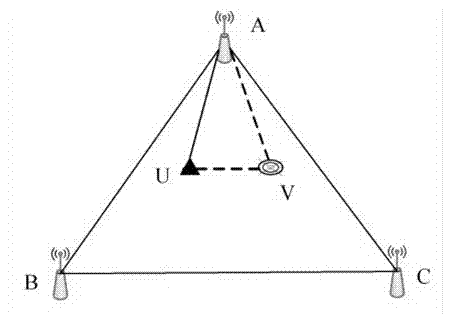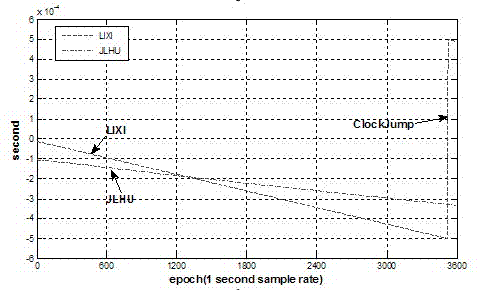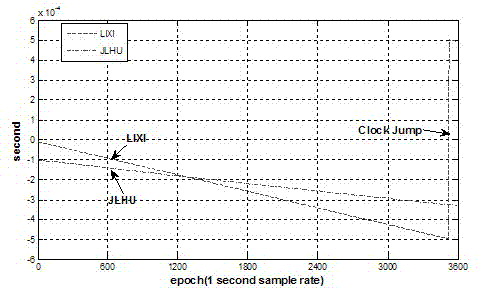Multi-constellation single base station receiver clock difference estimation method
A receiver clock difference and receiver technology, applied in the field of satellite positioning, can solve problems that cannot be eliminated or weakened, large receiver clock difference, etc.
- Summary
- Abstract
- Description
- Claims
- Application Information
AI Technical Summary
Problems solved by technology
Method used
Image
Examples
Embodiment Construction
[0049] Using a set of GPS and Beidou experimental reference station data of Southeast University, including Beidou dual-frequency B1, B2 carrier pseudo-range observation data, GPS L1, L2 carrier pseudo-range observation data, the experimental reference station is selected from the Lixi Building of Southeast University LIXI double star system ( GPS and Beidou) reference station and Jiulonghu JLHU dual-satellite system reference station, the baseline length is 19.7km, the receiver model is Unicore U240, and the data sampling interval is 1 second. figure 2 is the difference between GPS clocks of receivers at two stations, image 3 is the difference between the Beidou clocks of the receivers at the two stations, where a receiver clock jump of 1 millisecond occurs at the LIXI site at the 3522nd epoch, and the clock jump is caused by the receiver itself, so the clock differences of GPS and Beidou are at the same Time to jump.
[0050] For double-difference observations, the carrie...
PUM
 Login to View More
Login to View More Abstract
Description
Claims
Application Information
 Login to View More
Login to View More - R&D
- Intellectual Property
- Life Sciences
- Materials
- Tech Scout
- Unparalleled Data Quality
- Higher Quality Content
- 60% Fewer Hallucinations
Browse by: Latest US Patents, China's latest patents, Technical Efficacy Thesaurus, Application Domain, Technology Topic, Popular Technical Reports.
© 2025 PatSnap. All rights reserved.Legal|Privacy policy|Modern Slavery Act Transparency Statement|Sitemap|About US| Contact US: help@patsnap.com



